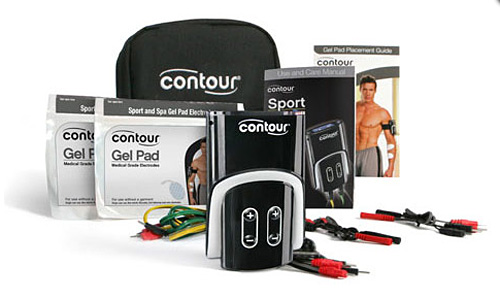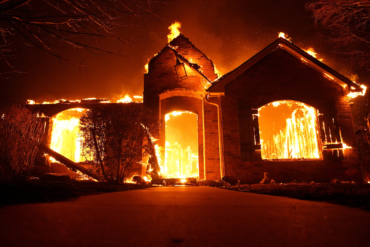By T.C. WORLEY
With a recovery drink in one hand and a magazine in the other, I sat on the couch with my legs outstretched, my muscles “quaking” rapidly. Black and red wires ran between a shiny device, and gel pads were fused to my thighs. I was recovering from an intense mountain bike training session via a Contour Sport device, a battery-powered electro-therapy product that stakes claims to “reduce injury, speed recovery and boost performance.”
Gel pads and electro-therapy? Yes, this is an unusual product. The company seems to know it, too: To clear the air and make sure people don’t see “gimmick” the minute they look into the Contour device, the company overcompensates with claims on its website, including the ubiquitous (and super cheesey) red “As Seen on TV” box, as well as claims of “FDA cleared for sale” and “Used by Professional Athletes.”

I typically shy away from anything that relies on such an unnatural approach to fitness. But a trusted friend swore the device worked for him and suggested I give it a try. It’s important to note that for my test I used the system for muscle recovery, not as a workout.
What does this quirky package do, you ask? Here’s how it works: Small, safe electric pulses are transmitted through the gel pads from four AAA batteries. These pulses fire muscle nerve fibers (motor neurons) in a similar fashion to the way your nervous system does, causing them to twitch as they contract and release. The electric pulses are said to “relax and refresh tired, sore muscles like a massage,” as well as “draw fresh nutrients” into muscles and speed removal of lactic acid. Similar to a low-intensity run or ride, the Contour Sport gently uses muscles to speed recovery.
For a true test, I used the Contour Sport, which costs $200, after long days of riding singletrack in Fruita, Colo., this spring. My friends and I rode as much trail as we could stand over the course of three days. Post-ride each night, I wired up the Contour to my sore, spent legs.

At first, the gel pads felt gross and cold — a medical-type invasion that is necessary to the device operating correctly. Choosing the “recovery” mode from a simple menu system, I’d find a comfy spot to sit and kick back to allow the Contour to zap my tired legs for a 24-minute cycle. I’d dial the intensity up as far as was moderately comfortable and let the Contour do its work.
In the end, I was pleasantly surprised, even a little shocked (pun intended), to find that each day my legs were tired but still woke up quickly and allowed me to ride hard again. Residual soreness levels certainly seemed lower than expected in Fruita. While it’s impossible for me to say how much of a difference it made, I felt like the Contour had worked.
Prior to using the Contour, my recovery method was to have a quick snack and drink water, do about 15 minutes of moderate yoga, and then sit in a tub of cold water for 10 minutes. It’s been my most beneficial recovery method for years. With the Contour, I’ll still have the snack and the water, but I’ll start the recovery while I’m sitting and eating. No yoga required.
For this article, I wanted some second opinions to validate my findings. Several professional cyclists I’ve talked to have used the Contour as well as other brands of electro-therapy devices and had favorable things to say. The athletes were mixed on using them post-ride, but most agreed that their favorite use was during long periods of inactivity, like a long, overseas flight.
I’ve tried the “workout” settings on the device that are more intense and intended to increase resistance, strength, endurance or speed. Some people might like these settings, but I much prefer to do my “work” on the bike or with free weights.
Am I a fan of electro-therapy and this system? To be honest, if time allows, I prefer a more natural recovery method. Soreness and fatigue seem to melt away best with stretching and muscles contracting in cold water. But there are many days when I just don’t have the time to follow my recovery routine. That is where the Contour has been great. For the time-crunched or jet-setting athlete, I believe that Contours’ “As Seen on TV” device is more than the gimmick it may at first appear to be.





